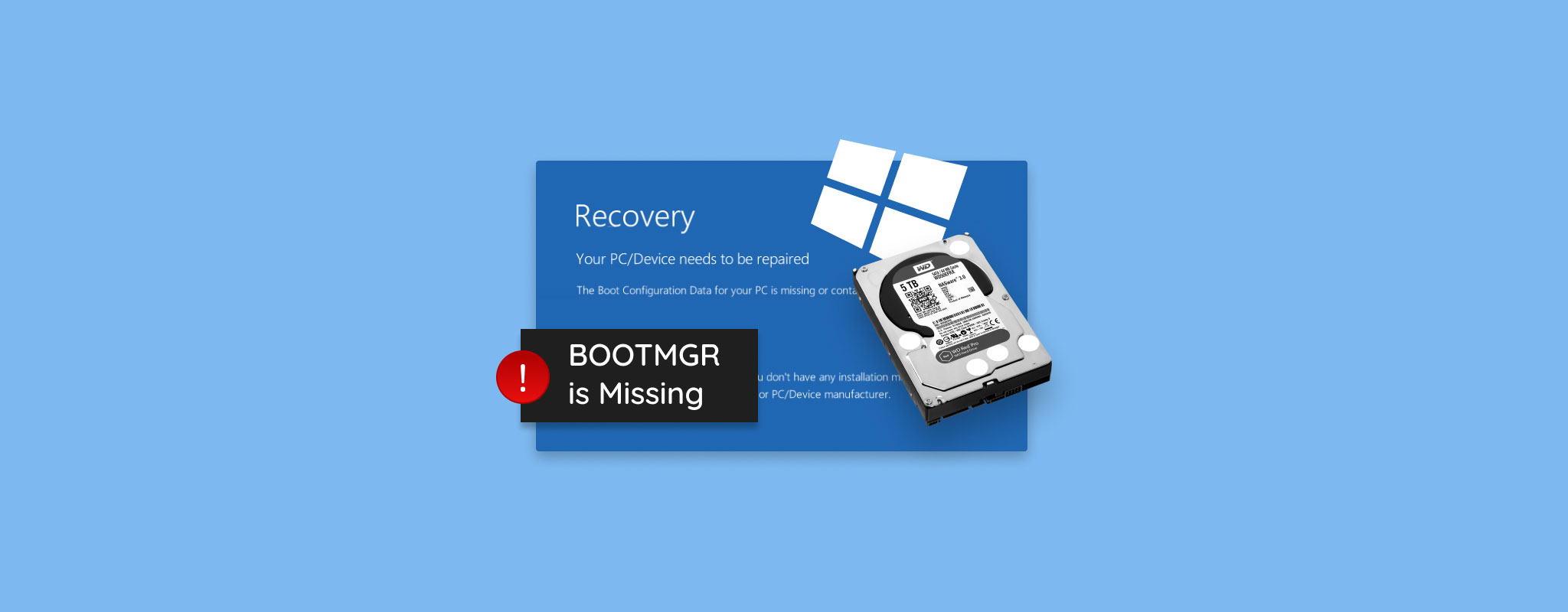 The “BOOTMGR is missing” error is a pesky one because it doesn’t let you boot into Windows and can sometimes be difficult to diagnose. However, it is not impossible to resolve. One of the various fixes in our guide is sure to work for you. As a bonus, we’ve also included a guide on how to recover your data after dealing with the error.
The “BOOTMGR is missing” error is a pesky one because it doesn’t let you boot into Windows and can sometimes be difficult to diagnose. However, it is not impossible to resolve. One of the various fixes in our guide is sure to work for you. As a bonus, we’ve also included a guide on how to recover your data after dealing with the error.
What Causes “BOOTMGR Missing” Errors
The Boot Manager, or BOOTMGR, is Windows’ bootloader – it is responsible for smoothly booting up Windows. It executes a file called winload.exe, which is responsible for loading up all the drivers and ensuring that Windows is ready to boot properly. The BOOTMGR file is read-only and hidden, typically located in the System Reserved partition on your computer.
When Windows has trouble finding and reading the BOOTMGR, you’ll get one of the following error messages:
- “BOOTMGR is missing. Press Ctrl Alt Del to restart.”
- “BOOTMGR is missing. Press any key to restart.”
- “Couldn’t find BOOTMGR.”
There can be several reasons why Windows is unable to locate the BOOTMGR. Some common ones are:
| Reason | Description |
| 🖥️ BIOS issues | An incorrectly set Boot Order in the BIOS or an outdated BIOS can both result in the BOOTMGR is missing error. Both problems can be easily addressed by updating the BIOS firmware and accessing the BIOS settings. |
| 📅 Problematic Windows update | Occasionally, a Windows Update can mess up your PC’s configuration, resulting in various issues, including ones related to the BOOTMGR. Uninstalling the update will fix the problem. |
| 🧍♂️ Human error | It’s easy to make mistakes and unknowingly make changes to your PC that prevent Windows from accessing the BOOTMGR. This could include deleting system files, switching up the boot order, or installing a problematic app. A System Restore is your best friend in this scenario. |
| 💥Power outage | Sudden power outages, and surges, can damage your computer’s components. There’s a high likelihood of your boot sector being damaged if the outage occurs while the Windows boot process is underway. |
| 🦠 Malware | Computer viruses can corrupt or completely wipe out your data. There are boot sector viruses, that specifically target the Master Boot Record (MBR) of your PC, preventing it from booting. |
| 💿 Bad sectors | Bad sectors are unreadable areas on your hard drive that can be the result of regular wear and tear, as well as other reasons like viruses. An accumulation of bad sectors in locations where system files are stored, can result in the BOOTMGR is missing error. |
How to Fix the “BOOTMGR Is Missing” Error
There are numerous ways to fix a boot manager that is missing or corrupt. Some fixes will be executed in the Windows Recovery Environment (WinRE). Typically, systems running Windows 8 and newer, will automatically boot into WinRE upon detecting boot issues. If your PC doesn’t boot into WinRE, you can enter it using Windows Installation Media.
To create Windows Installation Media, follow this guide by Microsoft. For Windows 7 users, it’s impossible to resolve the problem without a CD or USB containing the Windows installation media, because WinRE isn’t in-built into the OS.
Let’s get started.
Fix 1: Restart the Computer
Before proceeding to more complex methods, it’s recommended that you simply reboot your PC. Sometimes, even scary-sounding errors can be false alarms that no longer appear after you reboot your PC and you don’t have to talk about them ever again.
To reboot your PC when faced with the BOOTMGR is missing error, press CTRL + ALT + DEL. If that doesn’t work, press and hold the physical power button on your PC until it turns off. Wait a few seconds and power on the computer once again.
The reboot process resets several settings on your computer, which can fix the problem.
Fix 2: Perform a Hardware Check
When dealing with the BOOTMGR is missing error, it’s best to ensure that your storage drive is physically working properly and securely connected to your PC. Check for loose or damaged cables, as well as damaged ports. We recommend you reconnect the cables, just in case. Additionally, connect the drive to another PC and check whether it’s detected properly.
If you’re using a hard drive, be all ears for any clicking, beeping, and whirring noises from the disk. These sounds indicate the drive is physically damaged, in which case, it’s best to power off the drive and send it to a data recovery service to get back your data.
Fix 3: Check boot order in BIOS
The boot order or boot sequence determines which drive Windows uses to boot. If you have multiple drives connected to your computer, the boot order may have been changed and a non-booting drive is at the top. You can detect and fix this in the BIOS settings.
Here is how:
- Power on your PC.
- When the motherboard manufacturer’s logo appears, press the relevant key to enter the BIOS settings. Usually, it is one of the function keys (F1, F2, F10, F12, etc.) or the Delete/ESC keys. Refer to your motherboard’s manual to know the exact key.
- In the BIOS settings, look for a setting labeled – Boot, Boot Sequence, or Boot Order.
- Ensure that the drive containing Windows is at the top of the boot order. If not, move it up, save the settings, and exit.
- This should fix the BOOTMGR is missing issue.
Fix 4: Perform Windows Startup Repair
The Windows Startup Repair tool can detect and fix a wide range of boot-related issues on your PC. It’s simple to use, and can be found in the Windows Recovery Environment (WinRE). Hopefully, running the utility should fix the boot manager not found issue.
Here’s how to access Windows Startup Repair:
- If you’re greeted with the Choose an option screen when you boot your PC, it means you’re already in the Windows Recovery Environment (WinRE). If not, you need to connect the Windows Installation Media USB to your PC and boot the computer. On the install Windows screen, click on Next > Repair your computer. You’ll be booted into WinRE.
- Click on Troubleshoot > Advanced options.
- Here, choose the Startup Repair option.
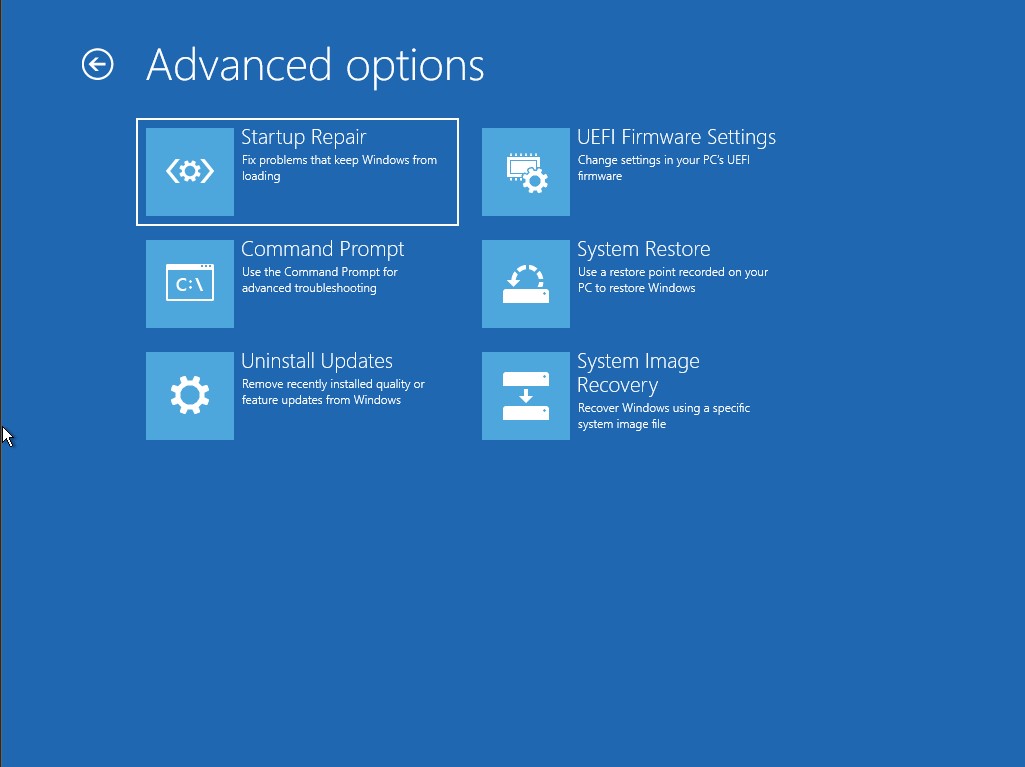
- Pick your Windows OS and Startup Repair will begin the repair process.
Fix 5: Use the Bootrec Utility in Command Prompt
Bootrec is a command-line utility that is commonly used to troubleshoot problems with the Master Boot Record (MBR), and the Boot Configuration Data (BCD). You can use it for restoring the boot manager, eliminating the BOOTMGR is missing error.
Being a command-line tool, you’ll need to use the Command Prompt to execute it. Follow these steps carefully:
- Enter the Windows Recovery Environment (WinRE).
- Click on Troubleshoot > Advanced.
- Click on Command Prompt.
- In the CMD console, type the following commands and press Enter:
- Bootrec /fixmbr
- Bootrec /fixboot
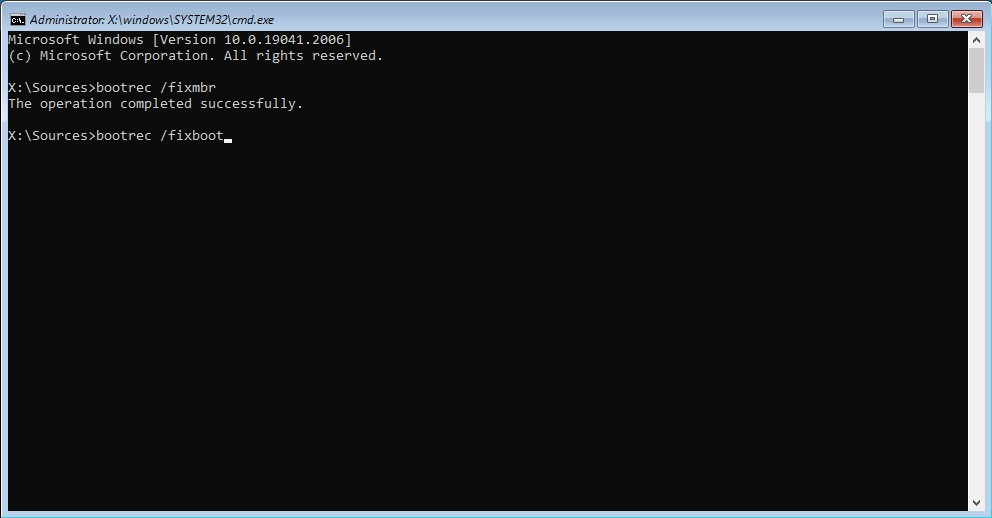
- Bootrec /rebuildbcd
- Reboot your PC.
Fix 6: Update the BIOS
An outdated BIOS can result in boot issues on your PC. If you don’t remember the last time you updated the BIOS, or this is the first time you’ve heard of such a thing, it’s time to update it. The exact BIOS update process will differ across motherboard manufacturers. Regardless, you will need a working PC with an active internet connection as well as a USB drive.
It’s best to look up the exact instructions for your particular motherboard, but updating a BIOS should look something like this:
- Download the latest BIOS update for your PC’s motherboard from the manufacturer’s website.
- Copy the downloaded file to the USB drive. Ensure there aren’t any other files on the pen drive.
- Connect the USB drive to the PC that’s not booting and power it on.
- Enter the BIOS menu.
- Click on the update menu. It’ll typically contain the word, “Flash.”
- The update process should begin automatically.
Fix 7: Use System Restore
The System Restore feature reverts your computer to an earlier state. It’s a useful tool when dealing with the BOOTMGR is missing error because it can undo any major changes you made to your PC. However, the feature should’ve been enabled beforehand.
Here’s how to use the System Restore feature:
- Enter the Windows Recovery Environment (WinRE). If you’re using Windows Installation Media, click on Next > Repair your computer.
- Click on Troubleshoot and choose Advanced.
- Click on System Restore.
- Click Next on the System Restore welcome screen.
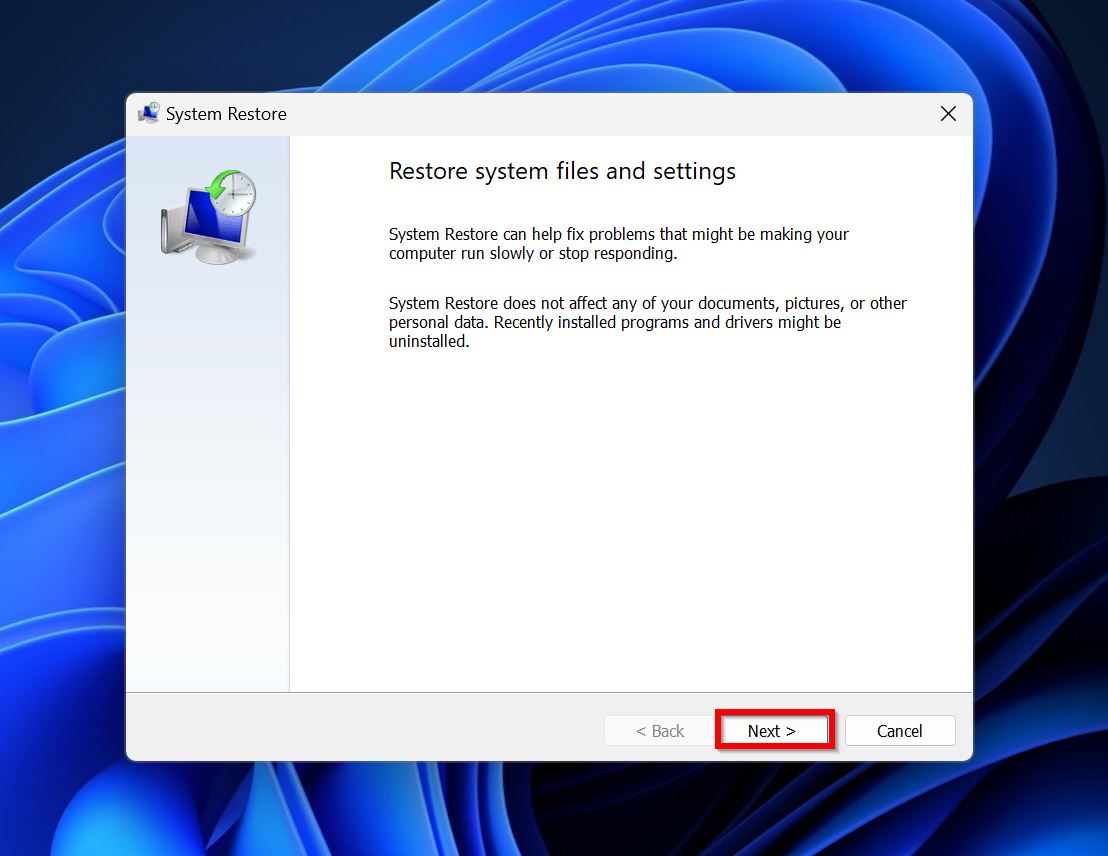
- Select a restore point that existed before the BOOTMGR is missing error cropped up. Click Next.
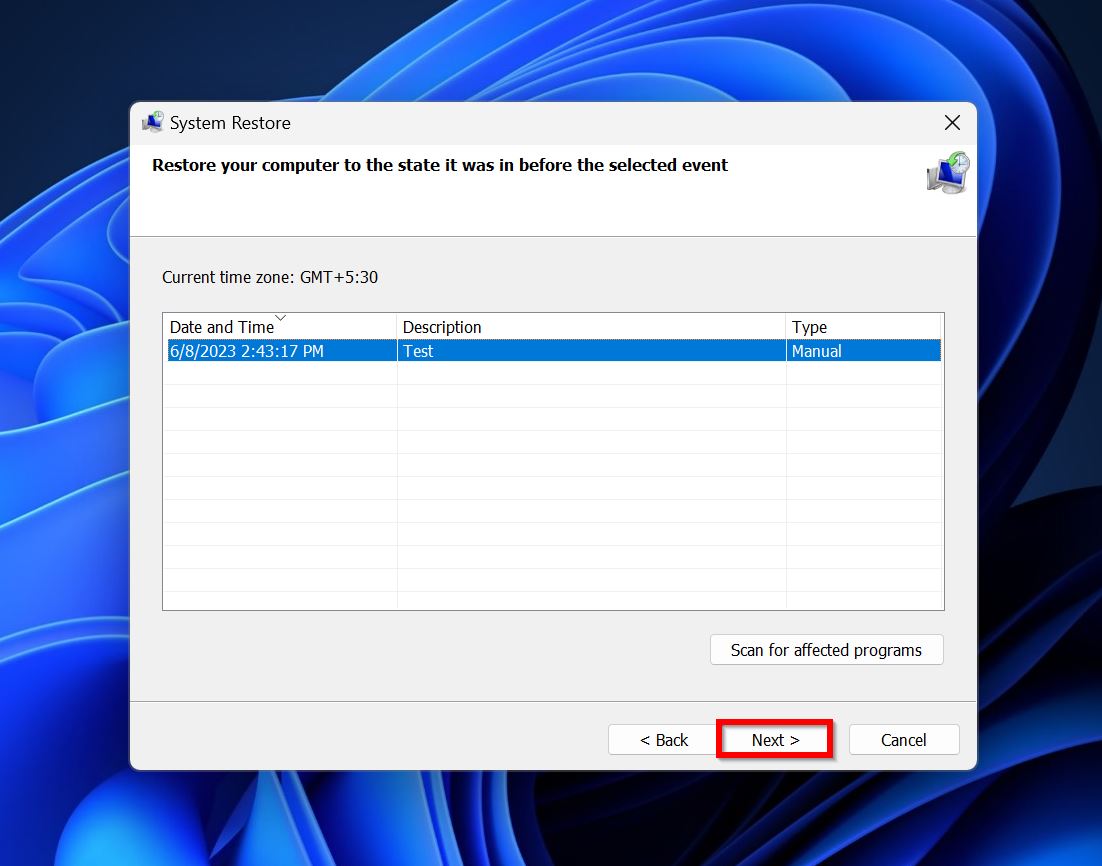
- Click on Finish to begin the restore process.
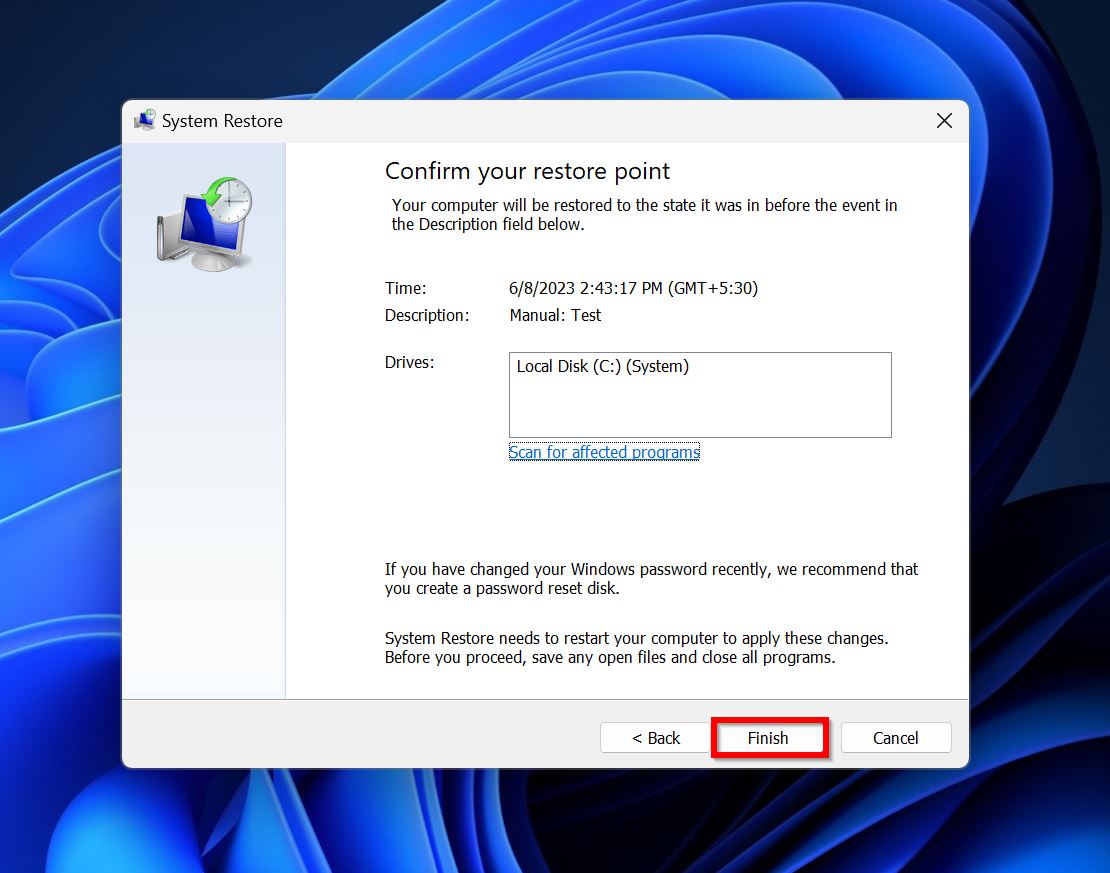
Fix 8: Perform a Clean Installation of Windows
If none of the aforementioned fixes worked for you, the only choice is to reinstall Windows. You can use the Windows Installation Media you created earlier to do this. However, the partition you install Windows on, will be formatted. Despite this, your data will still be recoverable. Refer to the data recovery section below to know how to get it back.
How to Recover Files from a Hard Drive after Fixing It
If bad sectors were what caused the BOOTMGR is missing error, it’s likely some other files have also been deleted or rendered inaccessible. Additionally, if you opt to reinstall Windows, the Windows partition will be formatted. However, the format is a Quick Format, which can be recovered from if you act quickly. Either way, you’ll need to use a third-party data recovery tool to recover data from a corrupted hard drive, or one that was Quick formatted.
For our tutorial, we decided to pick Disk Drill. It comes with all the features you’d expect from a good data recovery program – a capable data recovery algorithm, support for 400+ file formats, and compatibility with all major storage drive types and file systems. The best part is that it’s easy to use and will not overwhelm newer PC users.
Here’s how to perform a data recovery scan using Disk Drill:
- Download Disk Drill and install it.
- Open Disk Drill, select the drive or partition you wish to recover data from, and click on Search for lost data.
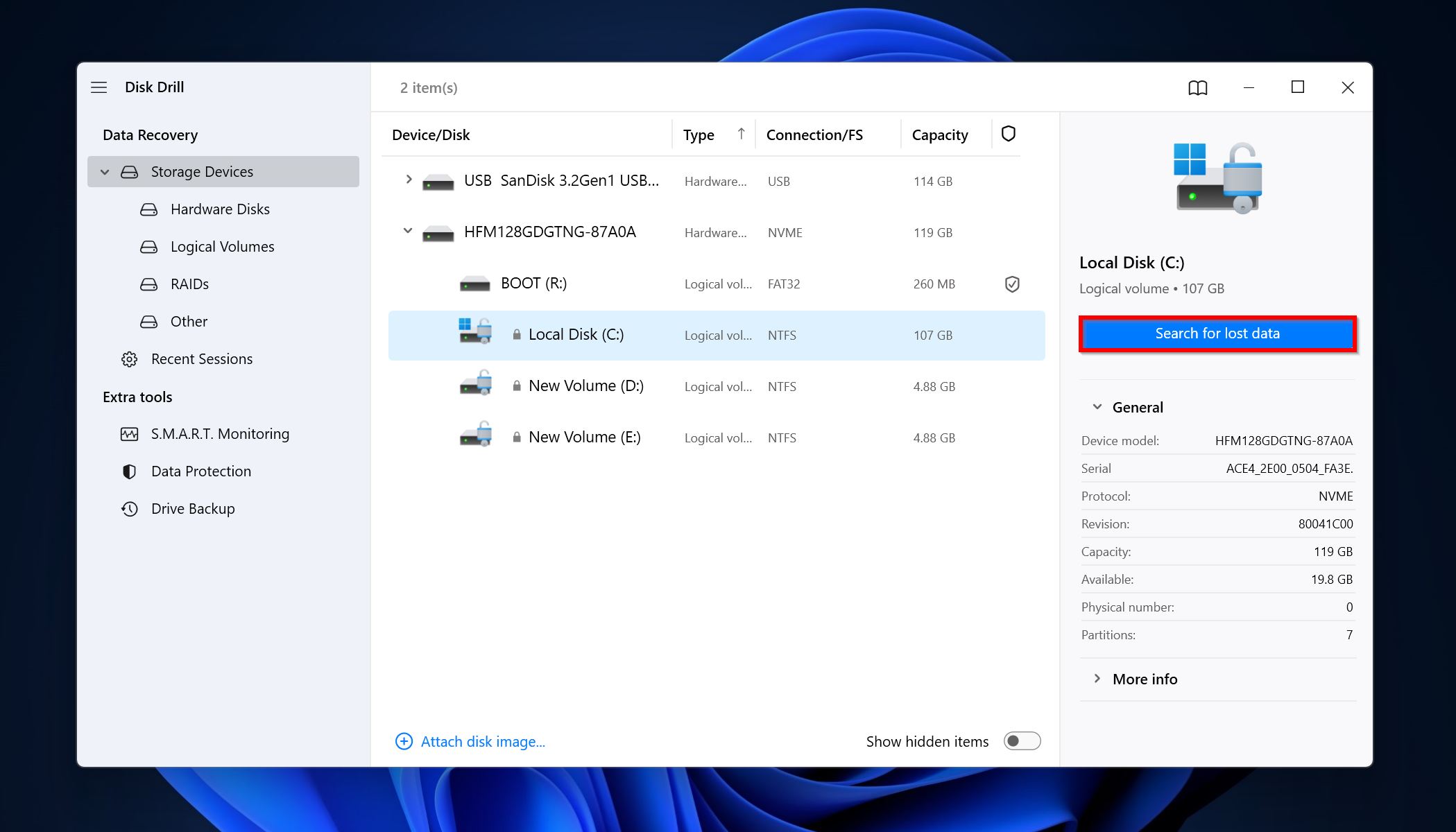
- Click on Review found items or directly filter out the files you want to see by selecting the relevant file type (Pictures, Video, Audio, Documents, Archives, and Other).
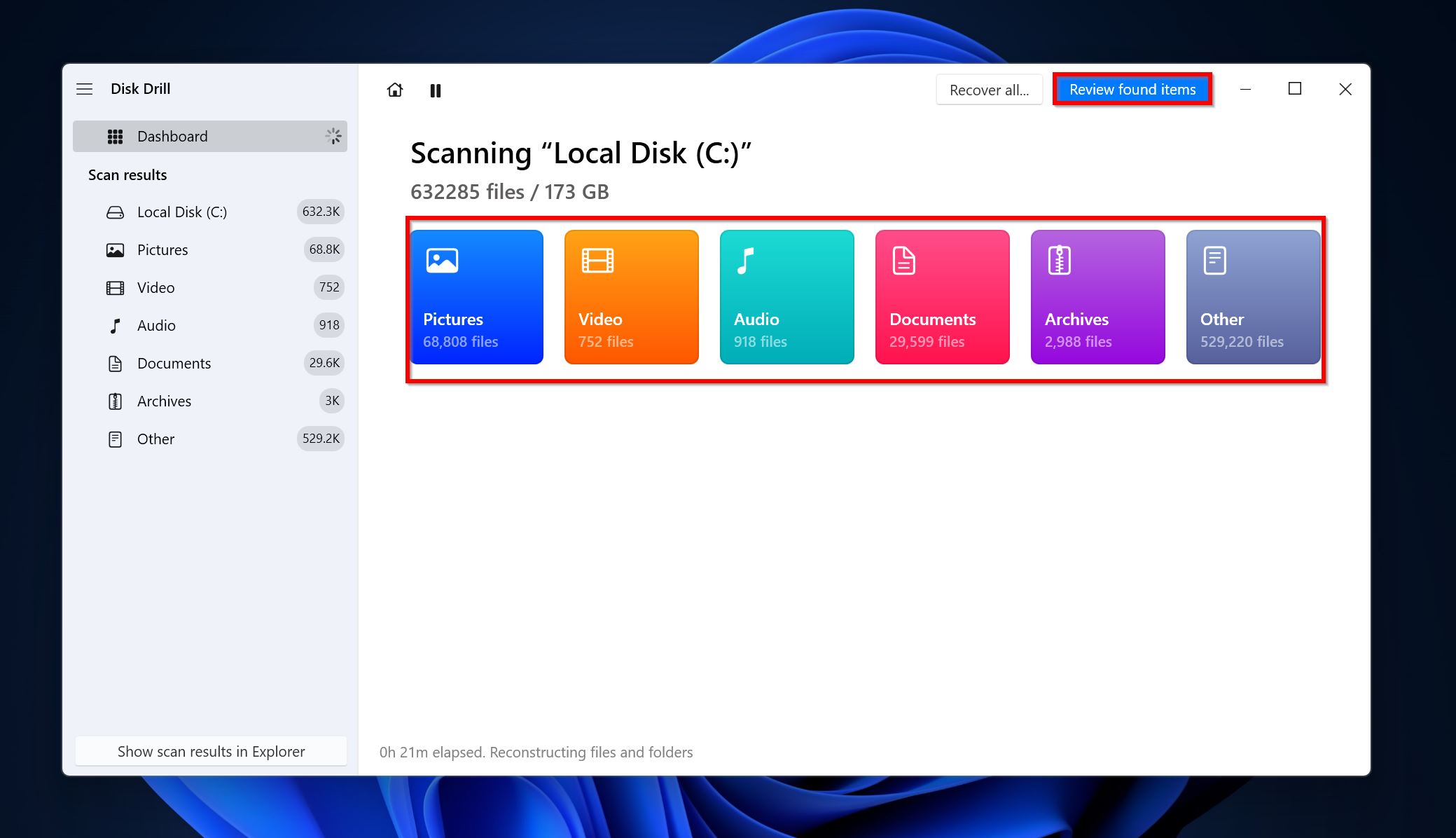
- Expand the Deleted or lost and Reconstructed sections to view files that were deleted and are recoverable.
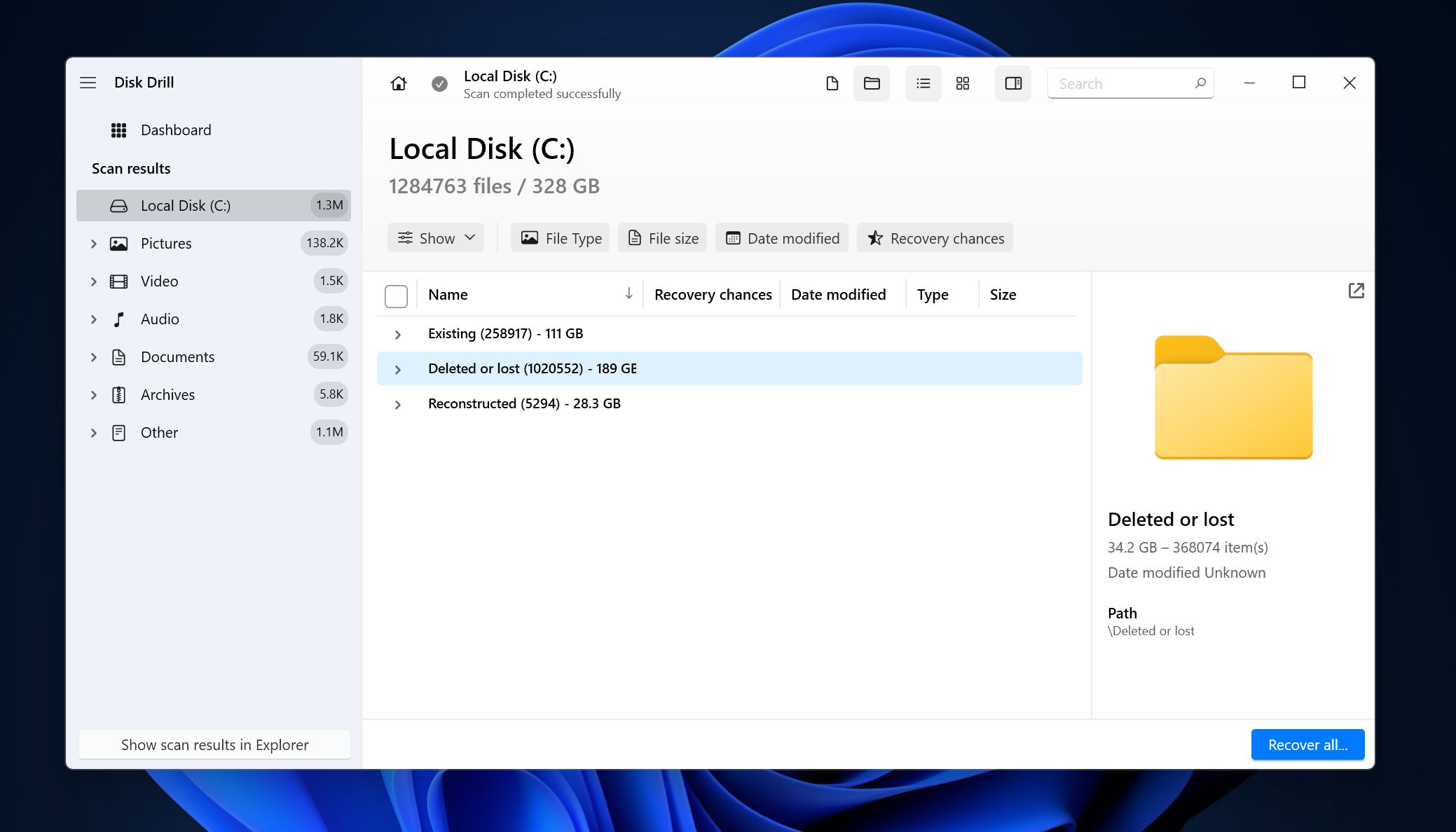
- Use the checkboxes to select the files you wish to recover. Disk Drill will display a preview of the currently selected file, but you can also click on the eye icon next to a filename to preview it. Click on Recover after you finish the selection.
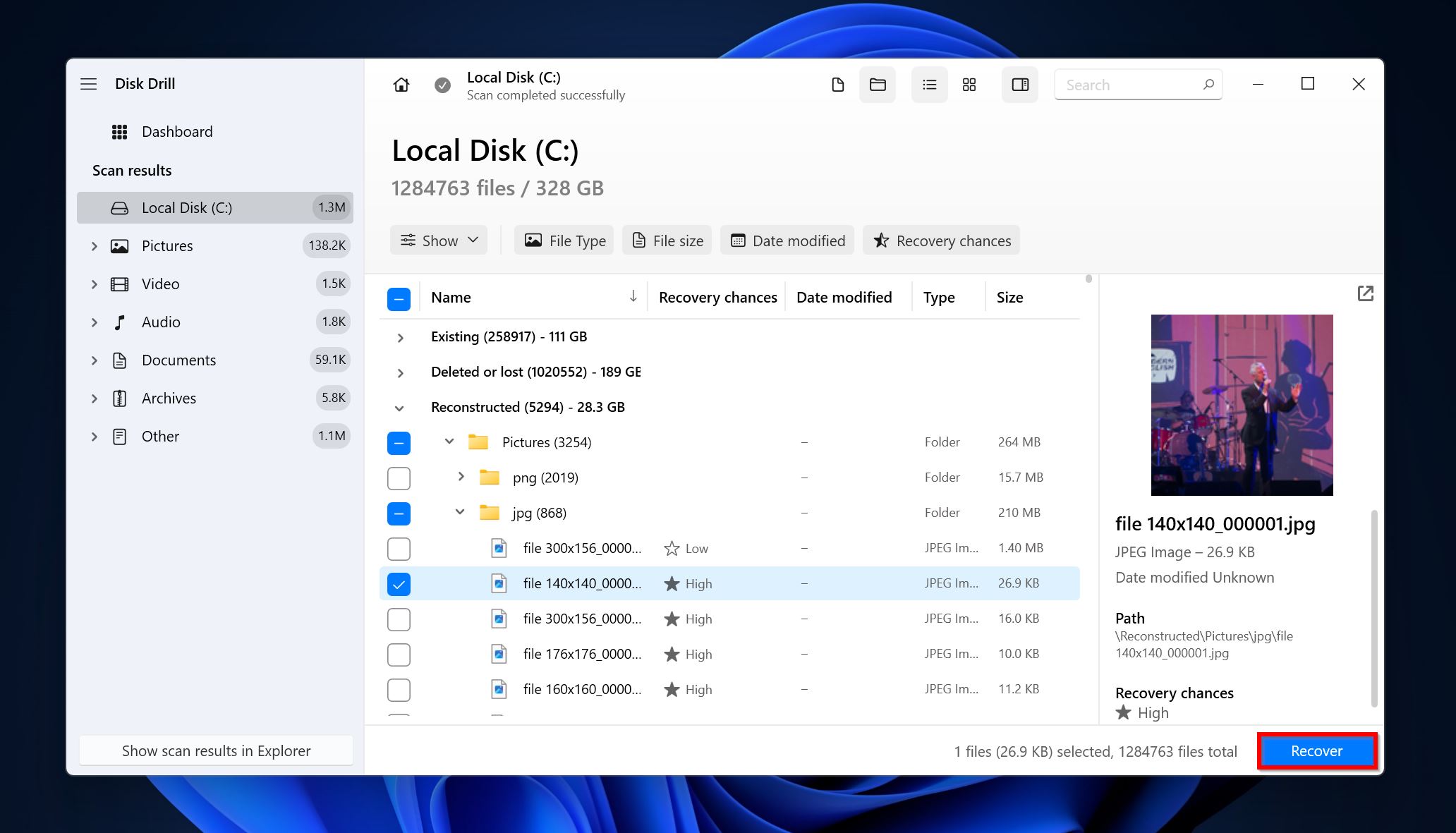
- Pick a recovery destination for the files and click Next.
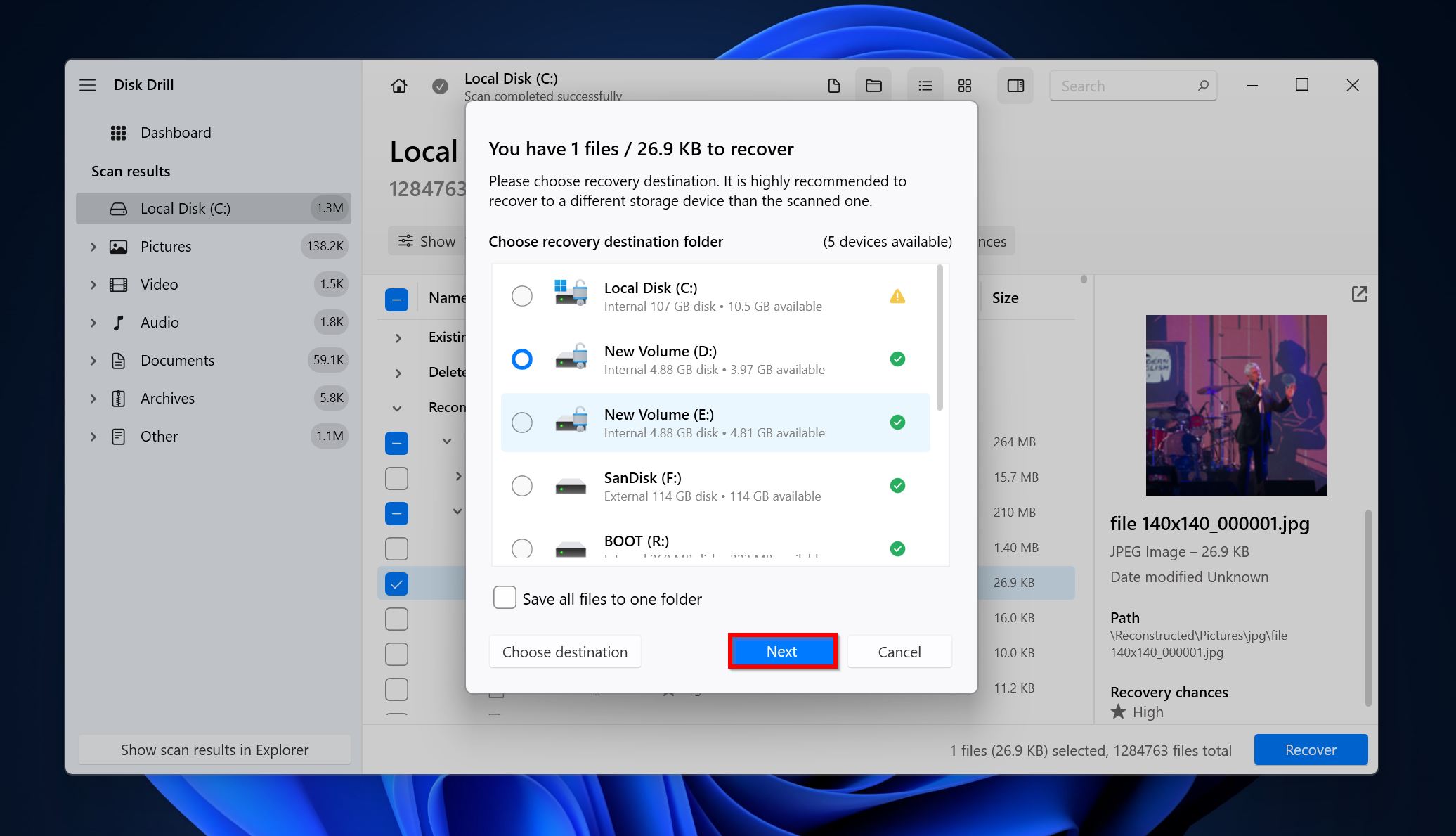
- Disk Drill will recover the files. You can recover up to 500 MB of data for free on Windows.
Conclusion
The BOOTMGR is missing error shows up unexpectedly and can sometimes signal serious issues with your storage drive. It’s best to always back up your data at regular intervals, preferably to the cloud as well as a local storage drive. It’s also a good idea to invest in a quality uninterrupted power supply (UPS) and an antivirus so that you’re protected against power surges/cuts as well as malware.
FAQ
- Click on Troubleshoot > Advanced > System Restore and follow the steps in the wizard.
- Again, go to Troubleshoot > Advanced. Click on Startup Repair.
- Open the Command Prompt using Troubleshoot > Advanced > Command Prompt. Type these commands and press Enter after each one:
- bootrec /fixmbr
- bootrec /fixboot
- bootrec /rebuildbcd
- sfc /scannow

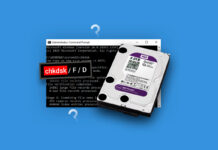
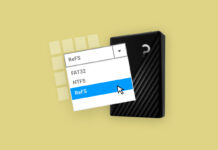
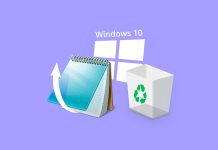
![How to Recover Corrupted Files on Windows [Best Methods] Recover corrupted files on Windows](https://blog.7datarecovery.com/wp-content/uploads/2021/03/recover-corrupted-files-windows-218x150.jpg)